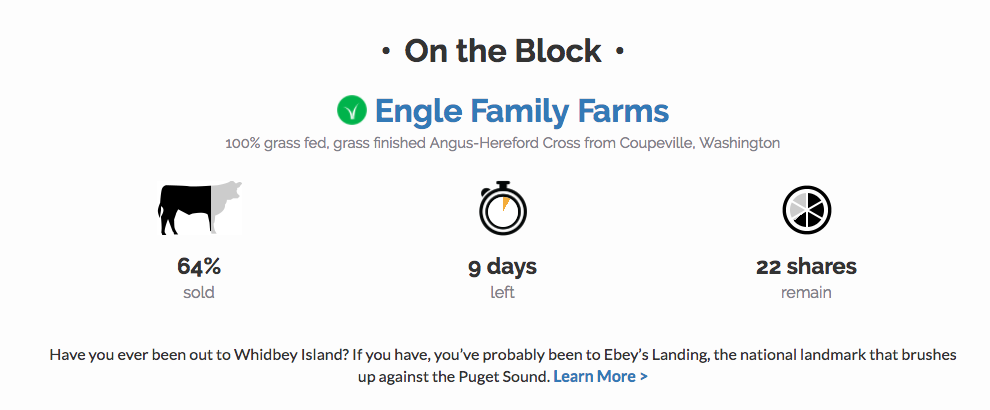We want to help you explore the wide variety of flavors, cuts, grasses, grains, and regions that make beef and ranching in the 21st century so gloriously diverse. That requires understanding our beef and farm offerings at a glance! What do the cows eat? What breed are they? Where’s the ranch? To that end, we’ve made a few changes to our event pages.

Underneath each farm name, you’ll now see:
- The feed type
- The breed of cattle
- And the location of the farm
And next to each farm name, we’ve added icons that tell you at a glance whether the beef is 100% grass-fed, is grain-fed, or is Wagyu beef.
Here’s a bit about the icons:

The grass icon means you're looking at beef that was raised entirely on grass, at every stage of its life after being weaned from its mother's milk. Engle Family Farms, run by a family that sailed into Whidbey Island, Washington in the mid-1800s and has been ranching since, is one such example of an all grass-fed, grass-finished farm.

The grain icon means the beef had grain in its diet at some point in its life, whether it was finished on grain (for example, Hutterian Farm), or received a regular grain supplement (like Cottonwood Ranch and its supplement of upcycled brewer’s mash).

This icon represents Wagyu beef. And it’s not the grocery-store stuff that typically is only a little bit Wagyu by DNA content -- no, this is real Wagyu. We’ll always tell you whether it’s A5 Wagyu from Japan (with 100% Kuroge Washu genetics), Fullblood Wagyu, or Purebred Wagyu, like Sweet Grass Farm on Lopez Island, Washington.
Our goal is to empower the rancher and the consumer, which for us means sharing the story of the farm and arming you with the information you need. We will continue to tell you about how the cows are treated, how the land is managed, and highlight when the farm has additional certifications. And this is just the start.
Now go make informed steak choices!